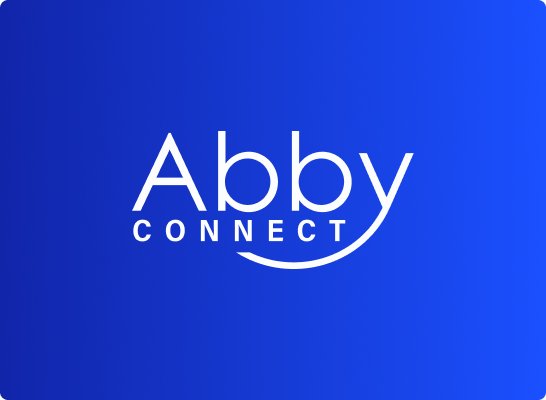Artificial intelligence is taking the world by storm.
Businesses of all sizes are using new AI tools to cut costs, increase efficiency, and grow. AI for small businesses is looking especially promising.
In fact, the Small Business & Entrepreneurship Council (SBE Council) reported that 75% of surveyed small businesses are already utilizing AI tools in their operations.
82% of small businesses found AI tools effective for running and growing their business. 93% agreed that AI tools are cost-effective and improve profitability.
While the small business owners surveyed by the SBE Council tend to be more tech-forward, this is a sure sign of things to come.
Why AI and Small Business is Such a Good Match
Small businesses don’t operate like the big guys. We have fewer resources and tighter budgets, and we have to do more to make a splash.
That’s why AI and small businesses are such a good match. When utilized effectively, AI can help small businesses:
- Bulk up their operations on a budget
- Increase staff and budget efficiency
- Save employees’ time so they can focus on revenue-generating activities
- Reduce human error
- Boost growth
The goal is to use AI to do the tasks that are too expensive, time-consuming, or routine to dedicate a human employee to. While AI can’t replace a whole person, with effective oversight they can handle some of that workload, so your team doesn’t have to.
How Small Businesses are Using AI
Small businesses always need more resources than they have. AI can help, but many business owners are still unsure of what AI can do and how to use it.
A couple of factors often block AI adoption:
- They don’t know about the AI resources available to them
- They don’t trust AI yet
- They don’t know how to work AI into their business’ workflows
Experience and exposure will help small businesses overcome these blockers. We’re here to help with the exposure part!
Internal Efficiency
AI can streamline operations and enhance employee productivity for small businesses. In fact, this is one of the most popular, accessible, and efficient uses of AI.
Companies can optimize workflows and allocate resources more effectively using AI-powered solutions.
Some examples are:
- AI-powered notetaking tools
- Predictive analytics for inventory management
- Automated scheduling software
- Process and workflow automation
- AI-powered time-tracking tools
- Smart learning and training platforms
At Abby Connect, we’ve integrated AI into our human receptionist service. Leveraging smart technology to make our human receptionists super-human. We use AI-generated call transcripts and summaries to reduce errors and allow receptionists to focus on the calls in the moment instead of taking notes.
Many companies are following suite, using AI-based notetaking, project management, and scheduling tools. By reducing admin work, small businesses are empowering their teams to take back their time.
(Related Blog: 10 Productivity Tips for Small Businesses)
Customer Service
AI for customer service is another hot-button topic for small businesses. There is a lot of hesitancy around adoption, and for good reason. We all remember the negative impact early chatbots had on customer experiences.
But that doesn’t mean that AI can’t be a helpful tool for small business customer service. You just have to be cognizant of how you’re using it and its impact on your customers.
There are two main ways to use AI for small business customer service. They are: AI tools for your teams and AI interacting with your customers.
AI tools for customer service teams include many of those internal efficiency tools. How can you leverage technology to make your expert customer service team even better at their jobs. This can be anything from Grammarly’s AI tools to improve communications to Otter.AI’s meeting assistant tool, which takes notes and generates summaries.
An example of AI tools for customer service teams is Abby’s Sentiment Scores. We make our (and our customers’) teams more effective by using AI to identify caller sentiment so they can prioritize the most important calls.
AI interacting with your customers is when someone chats, calls, or emails your business and interacts with AI. When done poorly, these tools can have a significant negative impact on your business. But, when done well, they can save your company time and money.
Creative
We all wish we had more creative resources—writers, designers, and videographers. But small businesses must manage tight budgets. AI can help.
AI can be used to create new images, videos, and copy. However, due to the limitations of large language models, nothing is new. These models take all the information in their database and slice and dice it to answer your query.
One of the best applications of AI for small businesses looking to generate creative, is to take original ideas, and use AI to improve them or expand on them.
For example: say you have an awesome blog post that you wrote. You can use generative AI writing tools to create a ton of actionable social media from it, generate ideas for additional posts, and turn it into a two-page PDF whitepaper. It can significantly improve the efficiency of marketing and sales teams.
Here are a couple of creative ways these teams can utilize AI:
- To edit original images
- To come up with new content ideas
- To expand on existing content ideas
- To generate sales pitches and slide decks
Potential Pitfalls of AI
Like any other new technology, we don’t yet know AI’s full capabilities and limitations. Small businesses using AI strategically can see incredible growth and exceptional opportunities. We don’t yet know all the pitfalls AI may have to offer.
Small businesses adopting AI should consider these key questions while shopping for solutions:
- Do we have oversight for the AI solution in place to ensure it’s working as expected?
- Do we understand how data accessed by AI is used and managed?
- What information does the AI have access to?
- Have we tested this solution to ensure it works as expected?
At this point, AI is fundamentally not human. It can do a great many things, but it can’t yet imitate creativity or empathy. So, we don’t want to put it in place where creativity or empathy are needed.
For example, AI may be able to answer your phones, manage FAQs, and more. But you still need a way for your callers to reach a person when they need to.
AI and your Small Business
AI interacting with your customers is when someone chats, calls, or emails your business and interacts with AI. When done poorly, these tools can have a significant negative impact on your business. But, when done well, they can save your company time and money.
However, for real-time solutions and a personalized touch, consider the advantages of using live chat support services over AI chatbots.
See how we’re utilizing AI at Abby Connect to provide better customer experiences>



